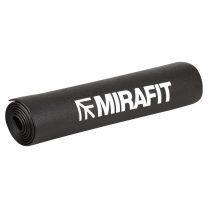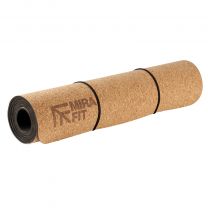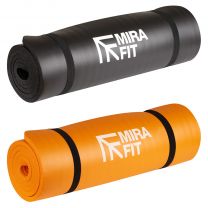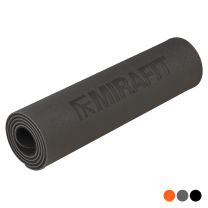How To Do The Perfect Plank: A Beginner's Guide
How To Do The Perfect Plank: A Beginner's Guide

Planks are a fantastic way to strengthen your core.
And they’re surprisingly hard considering they’re an exercise where you don’t actually move.
If you’re new to fitness and would like to start building up your strength, then here are a few reasons why you should learn how to do a plank.
1 - MAXIMISE YOUR GAINS
Planks are always thought of as great for your core – and there’s no doubt about it. But they’re also a way of engaging much more than just your middle. They allow you to work your hips, legs, arms, chest and shoulders.
And working several different muscles at the same time helps to stimulate muscle building hormones, which can improve your overall strength.
2 - THEY’RE GREAT FOR OVERALL FITNESS
The plank is an isometric core exercise. Isometric training is when you hold a position, which contracts a muscle without lengthening or shortening it while it’s tensed.
This is not only great for strength building but is also fantastic for burning fat and building endurance.
3 - THEY’RE GOOD FOR YOU MENTALLY
Plank exercises involve a good amount of concentration to help you maintain the correct position while pushing through the burn.
This is great for helping you stay in the present, so your mind doesn’t wander, as well as for building stamina.
4 - THEY HELP WITH BACK PROBLEMS
So many of us suffer from back problems – from sitting down at a desk all day, standing up all day or simply having weak back muscles.
Planks are great for working your lower back and building up strength without putting too much pressure on your spine.
And having a stronger back reduces your risk of injury when working out.
5 - THEY’RE GREAT FOR IMPROVING BALANCE AND POSTURE
Strong core muscles are essential for your balance and posture – something we can forget about when we’re in the gym. But not only are these key in terms of functional fitness, strengthening your core will also help you when weightlifting.
And you’ll definitely notice it when getting into position with your barbell or when lifting heavier weights.
How to Plank

Doing a plank correctly is a bit like doing a press up but without moving your arms. Beginners and those with shoulder problems will want to place their elbows and forearms on the floor (a low plank). But the plank can also be done with straight arms and elbows locked out underneath your shoulders (a high plank).
Essentially your aim is to hold your middle up so that it doesn’t touch the floor, without lifting your hips too high. Your core muscles should be tensed so that they can take your bodyweight and your spine should be neutral.
• First, get yourself a Soft Exercise Mat. A thicker mat might make it more difficult at first as you’ll have less stability. So, it’s best to start out with a slightly thinner mat such as a 12mm TPE Yoga Exercise Mat or a Cork Yoga Mat, just so you can cushion your elbows and stay grounded while you hold your plank.
• Then lie down on your front and place your elbows under your shoulders and push up onto them. You will want to keep your forearms flat on the floor and pointing directly in front of you.
• Keep your feet together while going up onto your toes.
• Your spine should be neutral – this includes your head. Imagine your spine is a straight pole so your neck and head are in-line with your back. Try not to crank your neck up and bend it down as this will affect your overall strength and form.
• Your hips should be square and follow the line of your spine. Keep checking in with your posture, and make sure you’re not lifting your hips up or letting them dip.
• Your knees should be locked, and your legs should be straight. However, if you are new to the plank and are struggling to the traditional position, it’s possible to start out on your knees rather than your feet and build up to a full plank.
Remember
• Tense your abs - keeping your abdominal muscles tense while holding this position will help engage your deeper, abdominal muscles. It will also ensure you are engaging your core correctly, so you can build strength.
• Keep checking your posture - the longer you hold your plank, the more likely you are to let your form slip so you drop or raise your hips. Keep checking your positioning and if it starts to slip, adjust and move back into position. If you can’t hold this position anymore without moving your hips, stop.
• Time your plank - you’ll want to time your plank, so you can keep an eye on your progress and start to hold your plank for longer. When you first start out, aim for a 20-30 second plank. Practise doing this for a week, and then when you feel ready, try holding it for 40-50 seconds, repeat and keep building from there. You don’t need to aim for a specific time however being able to hold a plank for 2-minutes or more is a good sign that you are building strength in your core.
• Engage your glutes - planks are a great opportunity to tense your glutes as well as your abs. So, make sure you engage as many muscles as possible and squeeze your butt while you plank. This is also a great way of engaging your posterior chain and building as much strength as possible.
HOW OFTEN SHOULD I PLANK?

How often you should plank is really about listening to your body and checking when your muscles have had enough and are feeling tired. You might find that if you have a particularly weak back, that your muscles start to feel tight and sore if you plank too much in the early stages.
If you are just starting to build core strength, it’s better to plank little and often. You don’t need to do it more than three times spread out throughout the day.
As you get stronger, you can start to work in a few sets. So, plank for a minute, stop and rest for a few minutes and then do another minute. You can do this 3-5 times a week but ensure you don’t strain or tire your muscles. A good form and correct posture are much more important. Doing planks incorrectly will do more harm than good.
For more content, follow us on Instagram, YouTube, TikTok, and on our official Mirafit Facebook page.
Enter your email to signup to our newsletter







